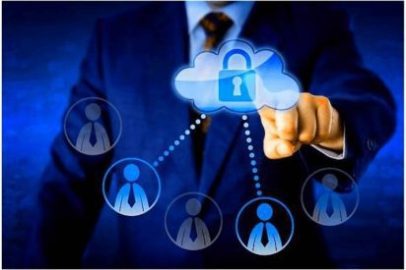Today, there is no company whose IT environment is one-dimensional and easily manageable regardless of its size. Even with start-ups, the necessary equipment with applications and tools, with internal servers and storage devices and external services in one or more clouds, and with the services provided by partners grows with the size of the business. In such a situation, it becomes more and more critical for those responsible for IT security to maintain an overview and take countermeasures in an emergency.
Therefore, asset management is becoming increasingly important: Which devices and applications are available at which point in the company? And what about the overview and control of this IT landscape in reality? A recent survey has shown that such a continuous inventory only plays a role in half of companies. It looks just as bad with the use of standardized tools.
The Threat Landscape Is Coming To A Head
The dangerous situation clarifies that this lack of visibility also represents a significant safety problem. Gateways through unrecognized devices or unpatched applications are challenging to defend and secure. Cybercriminals have the advantage that they only need a weak point to infiltrate; one loophole is enough to achieve their goal. This is why it is so difficult to secure the IT environment given the numerous options available to you in the Darknet through Malware as a Service.
Shadow IT, especially older IT components or software, endanger companies because they run under the radar of the IT department and thus also those responsible for security. Based on the supply chain attacks on software manufacturers, companies determined that even purchased software classified as safe is vulnerable. Relying on the fact that this software is automatically updated through license agreements and thus protected against loopholes has proven risky.
Risks from hidden assets in the IT and cloud infrastructure arise from cyber attacks and a lack of compliance, for example, in audits. The lack of inventory can lead to penalties and violations of compliance guidelines such as ISO 27001 and others.
Recognize, Categorize And Protect Assets
An essential prerequisite for improving IT security in companies is a complete overview of all existing assets. Security updates can only be carried out once all purchases have been made visible. Unfortunately, the reality is that ransomware attacks only succeed because attackers use vulnerabilities in unobserved and unpatched systems as an entry point into IT to paralyze the entire company network. Security problems usually arise from the fact that nobody in the company is aware of the weak points in the infrastructure. There is also no awareness of which assets are actually in your network and what it looks like with the connection to partner networks. These dependencies are constantly growing: The corporate environment is changing, the IT infrastructure is increasing over the years and no longer only includes in-house assets (“on-premise”) but also mobile devices, flexible workstations, or services that come from the cloud. There are also external connections and dependencies.
Cloud platforms for asset management use sensors for a continuous overview of all applications and data of a company, regardless of whether they are in your own company or a cloud. The sensors are always active and provide an overview of all IT assets within two seconds. They can be deployed remotely, are centrally managed, and updated themselves. In addition, they are deployed as physical and virtual appliances or agents and are synchronized with cloud providers.
With the sensors and continuous monitoring, users are immediately aware of weaknesses and threats. The security analysts do not have to wait for extra scans. In addition to security in their own data center and cloud infrastructures, providers of these asset management platforms offer endpoint security and security for web applications, including DevOps environments. In addition, the companies are supported in compliance with internal guidelines, industry standards, or external regulations. The cloud platform applications are integrated and exchange data with one another. This enables analyzes and correlations in real-time.
Conclusion
Asset management is perhaps one of the most diverse tasks in IT. At the same time, it is one of the most challenging tasks because it is very time-consuming, error-prone, and therefore risky. If the increasingly complex cloud infrastructure is added, it threatens to become even more confusing. Automation is, thus, almost a requirement, especially when it comes to protecting against risks such as cyber threats. Platform solutions for the inventory of all IT components, whether in your data center or the cloud or DevOps environments, are a great relief for those responsible for IT security.
Automation blocks access to a device based on a specific factor. For example, if you want to create a zero-trust environment, they need to continuously use automation to assess the system. Automating data collection and analysis is also a good starting point for finding out what role a device plays and applying security policies. With the transition to the cloud and containers, companies have the opportunity to develop systems and data collection and analysis in combination with the appropriate responses.
Also Read: The 10 Cloud Trends in 2021


